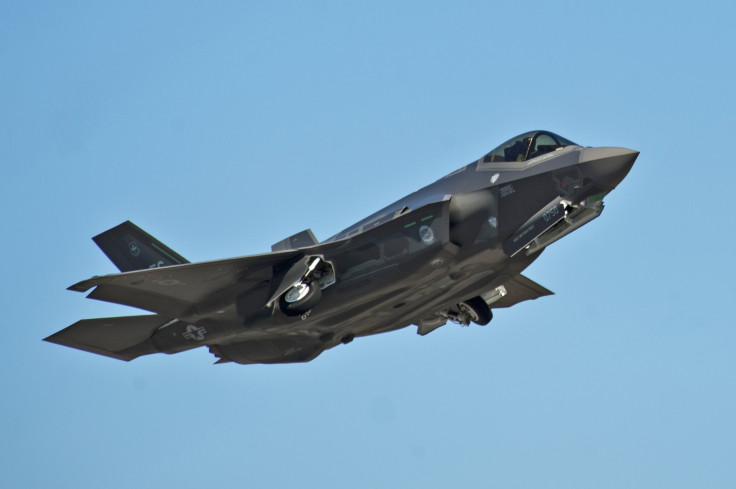The F-35 Has More Engine Troubles, But It's Been Through Worse

The debate over the reliability of the Lockheed Martin F-35, the fighter jet that is also the most expensive single weapons program in U.S. history, has taken another turn, as two separate government reports have declared its engines to be unreliable.
The Government Accountability Office report, originally released in mid-April, said that the engines, made by Pratt & Whitney, were a problem. "The F-35 system reliability has been limited by poor engine reliability," the report said, adding that it "will take additional time and resources to achieve reliability goals.”
According to the report, based on data from December 2014, the version of the F-35 that the U.S. Marines will use was able to fly for only 47 hours between failures caused specifically by engine design, instead of the 90 hours planned. The Air Force and Navy managed 25 hours between engine failures instead of 120 hours.
The entire fleet of F-35s, which is still in testing, with the first units scheduled to enter service later this year, was grounded last summer after a fire in a Pratt & Whitney engine.
“Pratt & Whitney disagrees with the conclusions drawn relative to engine reliability" by the Government Accountability Office, the company said in a statement. “The report incorrectly assessed engine reliability, as it did not account for new designs that have been validated and are being incorporated into production and fleet engines.”
Matthew Bates, a spokesman for Pratt & Whitney, admitted that the F-35B, the Marine Corps model, was slightly behind schedule because of intricate engine design that will allow the aircraft to take off and land vertically. But he also said that the Air Force version, the F-35A, and the Navy's F-35C were at 147 percent engine reliability, meaning the amount of hours between engine failures was 47 percent above the current target.
The F-35s that conducted takeoff and landing drills aboard the aircraft carrier USS Nimitz earlier this year experienced “zero” incidents of unscheduled maintenance on the newer engines they were fitted with, Bates said.
The F-35 has experienced several failures and problems over the past few years, including engine fires, software glitches and a bizarre issue that left planes unable to run on fuel warmed up by the sun while it sat in Air Force fuel trucks. These issues have led critics of the aircraft, which is set to cost more than $1 trillion over the program's lifetime, to label it an expensive mistake. The new Senate Armed Services Committee chairman, Arizona Republican John McCain, has judged the jet's many problems indicative of lengthy and expensive procurement programs he wants to end. He called the F-35 program “one of the great national scandals" in a 2013 interview.
Pratt & Whitney countered the GAO report findings, saying that the data was taken from older engines used for earlier flight tests and did not account for newer designs that will be installed in the thousands of aircraft that are due to be built.
“I’m sure that Pratt & Whitney has a point,” said aviation engine expert William Storey, president of Teal Group Corporation, an aerospace and defense analysis group based outside Washington. “As with any new engine like this, especially of such high performance, there will always be teething pains.”
Pratt & Whitney, a subsidiary of United Technologies, also took criticism from a Department of Defense inspector general report released on Monday. The report criticized the Joint Program Office, which leads the F-35 program, the Defense Contract Management Agency and Pratt & Whitney for poor attention to safety, lax oversight and a range of other lapses. The biggest problem was 61 quality management issues that the DoD report said could lead to higher costs.
However, according to Pratt & Whitney, many of the issues raised in the report, based on a November 2014 audit, have been largely addressed. “As of mid-April, P&W has already implemented approximately 60 percent of our identified corrective actions, and all but one are scheduled to be completed by July,” a statement said.
“A sure sign of a major problem with the engine would have been a fleet grounding,” said Storey. “It’s probably more of a performance issue or some durability issues, but those are things that get addressed in any engine. It’s often the 1.1 version of anything that gets things closer to where they want to be.”
© Copyright IBTimes 2024. All rights reserved.












